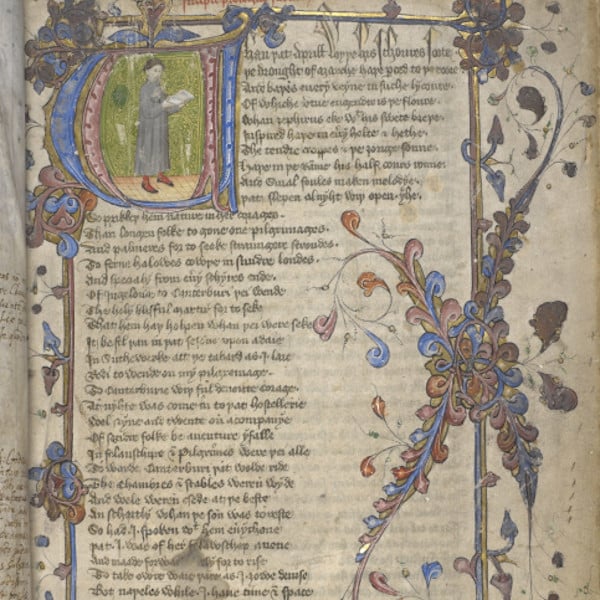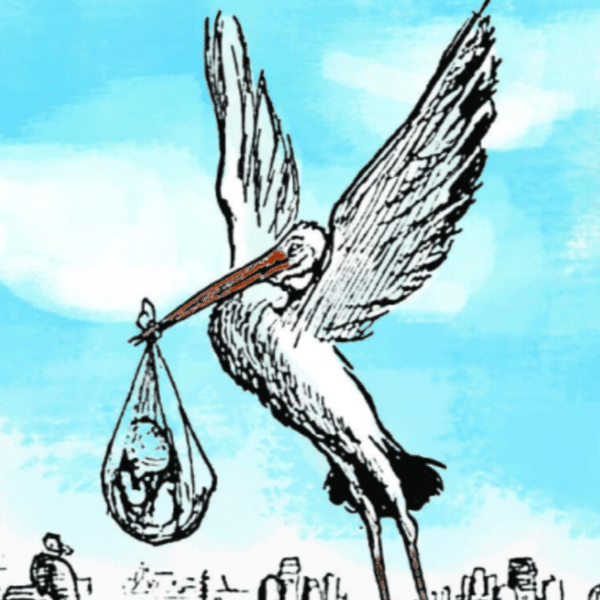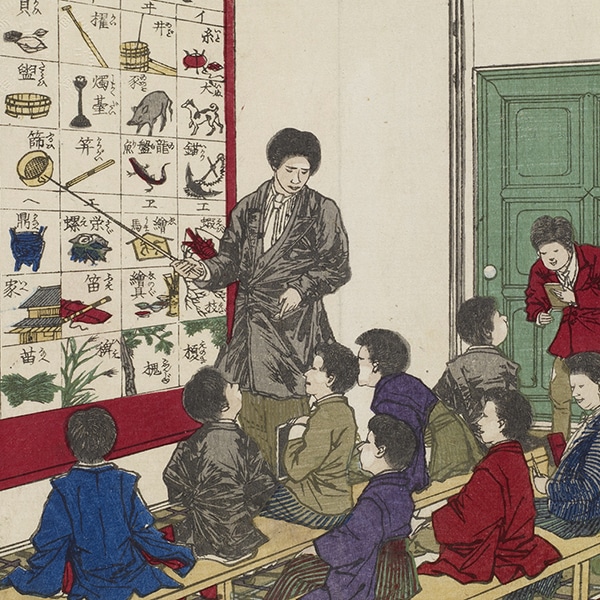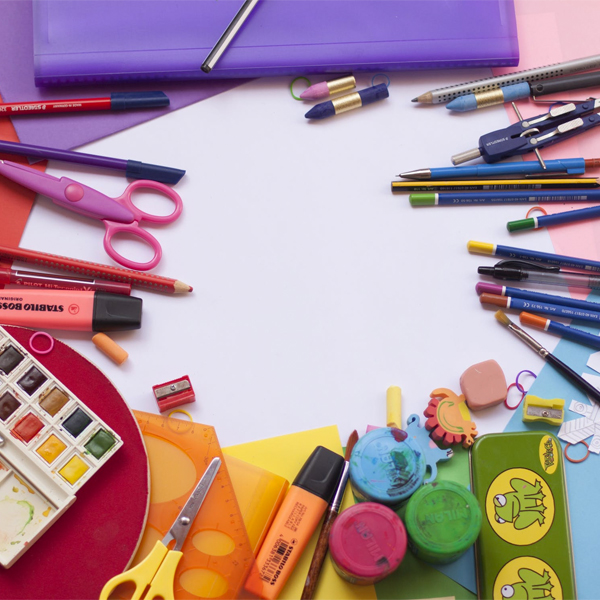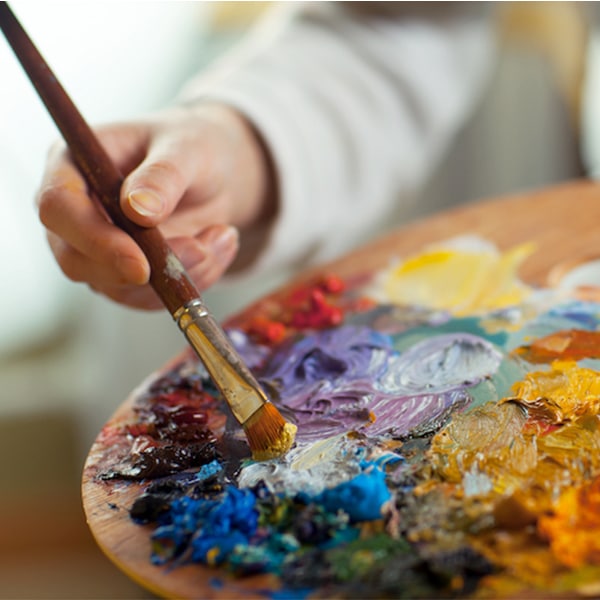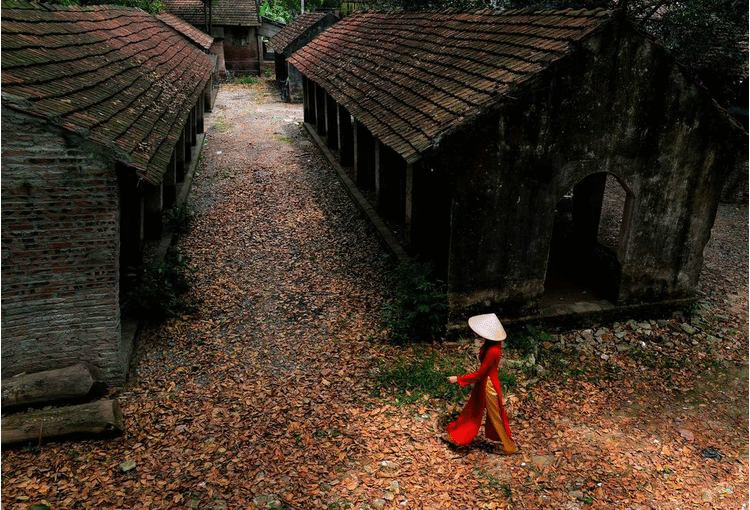
Most creatives, from painters to photographers, will have come across the Rule of Thirds at some point. Anyone who deals in producing visually appealing work will have had this golden guideline pushed on them in order to achieve a balanced composition. But what is the Rule of Thirds? And where does it come from?
What is the Rule of Thirds?
The Rule of Thirds is a general guideline for how to create an interesting composition which states that any image—painting, photograph, graphic design—should be broken into a grid with two vertical and two horizontal lines, creating nine equally proportioned boxes. Important compositional elements should then be placed either on the lines or at their intersections. This results in dynamic, interesting compositions that draw the viewer's eye across the scene.
This technique is often employed in landscape painting and photography, but really can apply to any genre. As one of the beginning rules of composition taught to visual artists, it's a quick and easy way for anyone—from beginner to expert—to improve the visual impact of their work. And while today the Rule of Thirds is most often associated with photography, it should come as no surprise that it originates from painting.
One of many compositional tricks that artists use, the Rule of Thirds was first written down in 1797, when an author quoted English painter Sir Joshua Reynolds. In discussing the balance of light and dark in an artwork, Reynolds refers to the Rule of Thirds, discussing it as a more general principle of balance. It would later be transformed into the grid system we know today.
An easy way to see if artwork—whether your own or by others—follows the Rule of Thirds is to lay a grid over the final image. If you don't feel like making the simple calculations, you can download a grid.
Rule of Thirds in Painting
Photographers aren't the only ones who use the Rule of Thirds. Long before the world's first photographs, famous artists frequently employed the technique in order to achieve harmony and balance in their compositions. Let's look at three different artists across different genres to see how they all applied the Rule of Thirds to great effect.
Johannes Vermeer

‘A Maid Asleep' by Johannes Vermeer (ca. 1656–57). (Photo: The Met, Public domain)
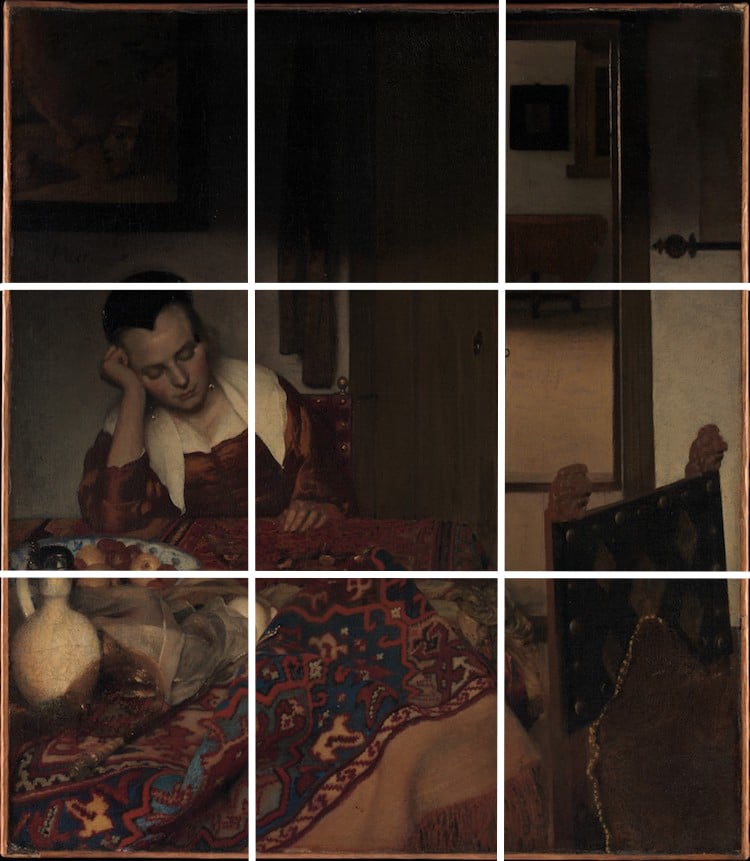
This early painting by Vermeer shows a use of the compositional trick in the manner in which the sleeping maid's head lines up with the upper horizontal line. Interestingly, the top of the jug on the table matches the lower horizontal line, creating a pleasing distance between the foreground and background subject. Even the door cracked open has a compositional purpose. The door itself falls exactly on the right vertical line running through the painting. These choices, combined with Vermeer's use of light and shadow, lend dramatic tension to this seemingly everyday scene.
J.M.W. Turner
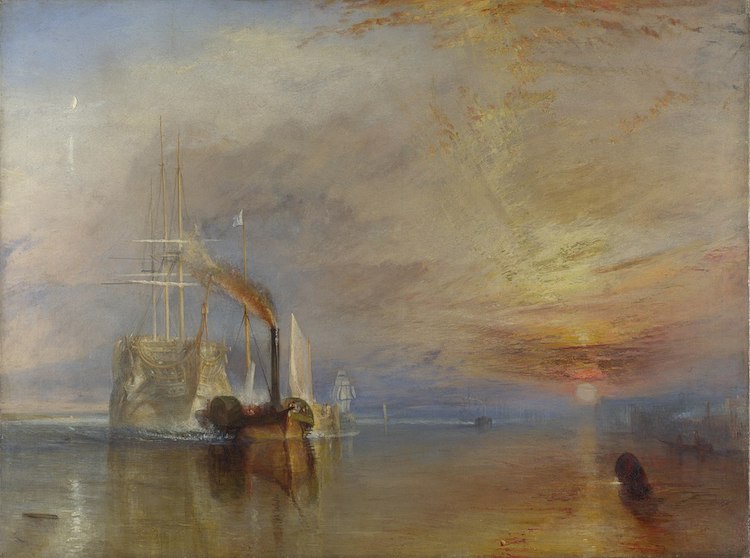
‘The Fighting Temeraire' by J.M.W. Turner (1838) (Photo: National Gallery via Wikimedia Commons, Public domain)
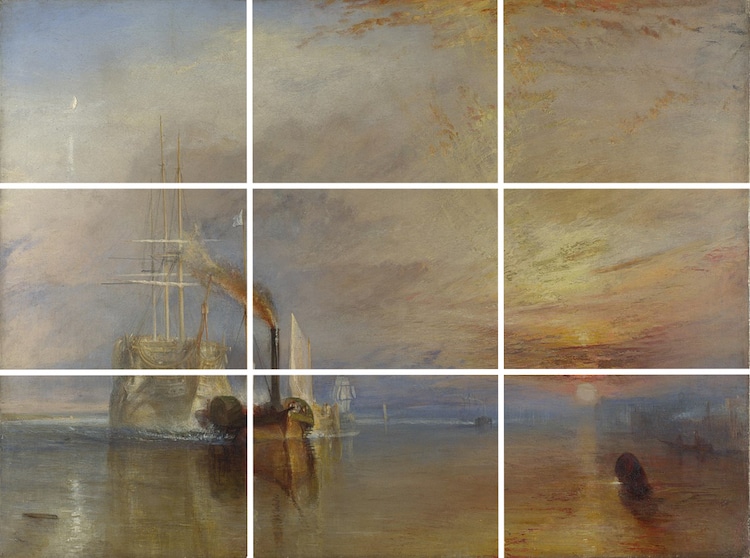
This famous landscape painting by acclaimed English Romantic painter J.M.W. Turner makes great use of the Rule of Thirds. Not only does the horizon fall on the lower horizontal line, but the ships intersect along the first vertical line. Placing the ships slightly off-center gives the piece a sense of dynamic movement that helps make it one of Turner's most acclaimed paintings.
Pierre-Auguste Renoir

‘On the Grass' by Pierre-Auguste Renoir (1873) (Photo: Barnes Collection, Public domain)
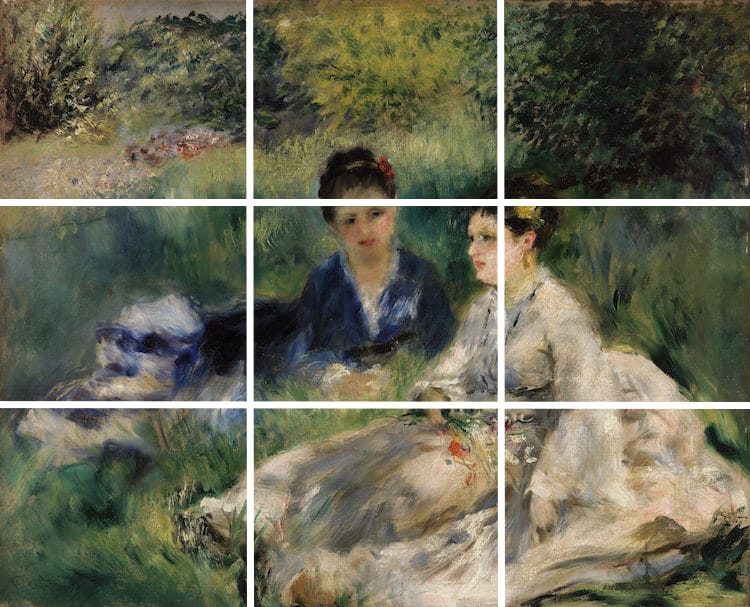
Impressionists may be known as rule breakers, but that doesn't mean they didn't practice the fundamentals of good composition. Renoir‘s 1873 oil painting, now part of the Barnes Foundation in Philadelphia, shows the careful placement of his main subjects, letting them hit along multiple lines in the grid. Renoir's masterpiece is a good reminder of how the Rule of Thirds can be used to create natural groupings of people within a composition.
Rule of Thirds in Photography
Today, when we think of the Rule of Thirds, photography is the creative field that most commonly comes to mind. Less technical than the golden ratio; it's a nice beginner's rule of thumb. And while it's often associated with landscape photography, the guideline works across any photographic genre. Let's take a look at some examples of how photographers employ the Rule of Thirds in their work to highlight different areas of importance.
Examples of the Rule of Thirds in Landscape and Nature Photography
Whether it's following the peaks of mountains or a cascade of water as it crashes down, balancing the elements of the natural world can be aided by the Rule of Thirds. Of course, it's important not to get too hung up on the rule, but it's a great beginner's trick to help improve your work and take your landscape and nature photography to another level.

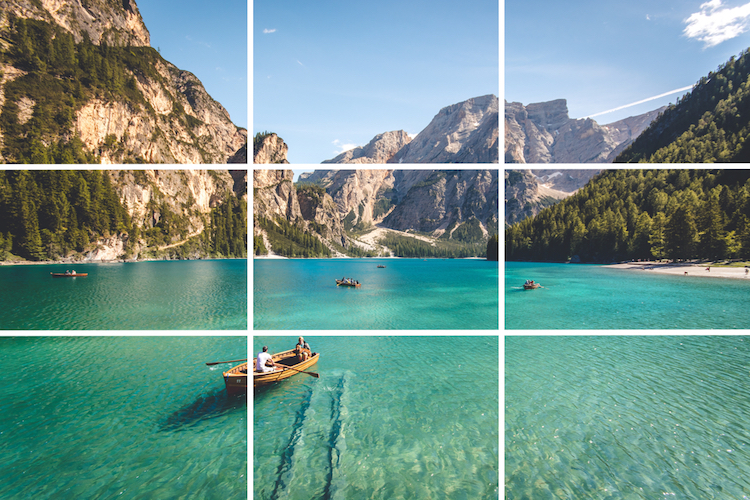
By placing the rowboat slightly off-center along the bottom of the first vertical, the photographer has given his image a strong focal point. The viewer's gaze immediately goes to the boat, which then provides a natural compositional guideline up to the mountain. Without this focus, the viewer would have no specific place to focus on the image, which diminishes its impact.

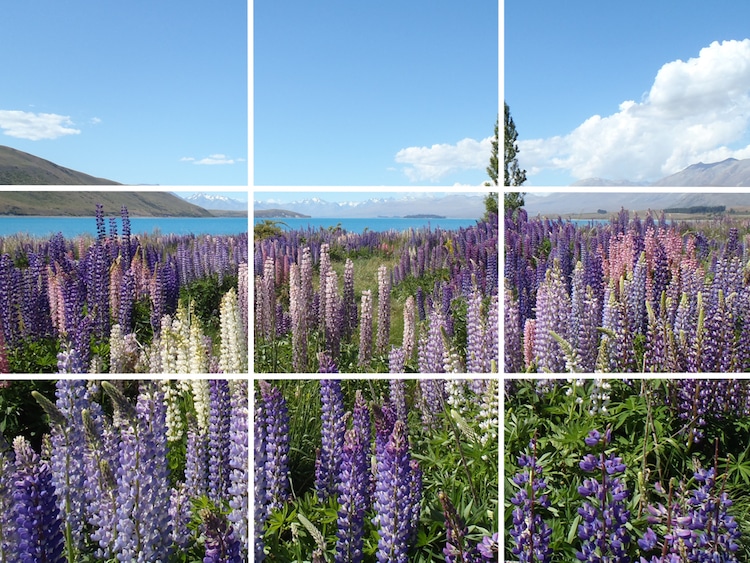
The tree popping up from this field of flowers is perfectly placed to break up the uniformity of the landscape and give a sense of depth to a scene that would otherwise be quite static.
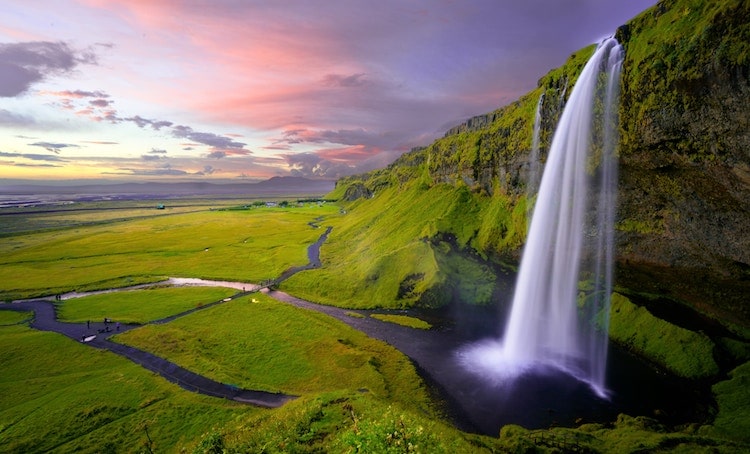
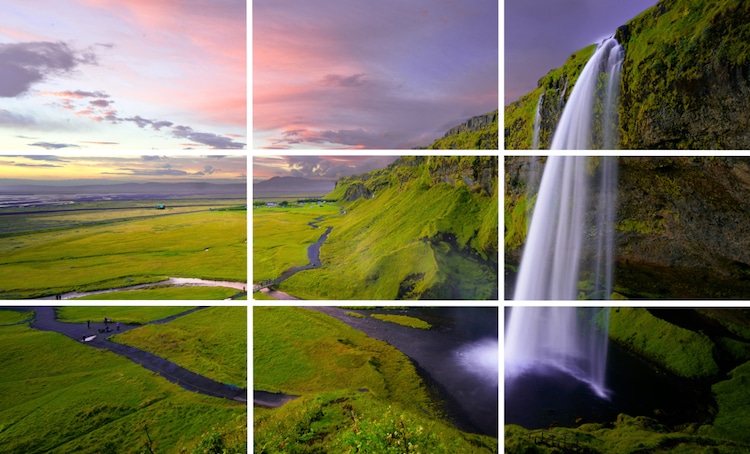
By placing the main subject all the way to one side of the frame, the photographer then uses the negative space in the remaining two-thirds of the photograph to create visual interest. In doing so, the landscape seems more dramatic.
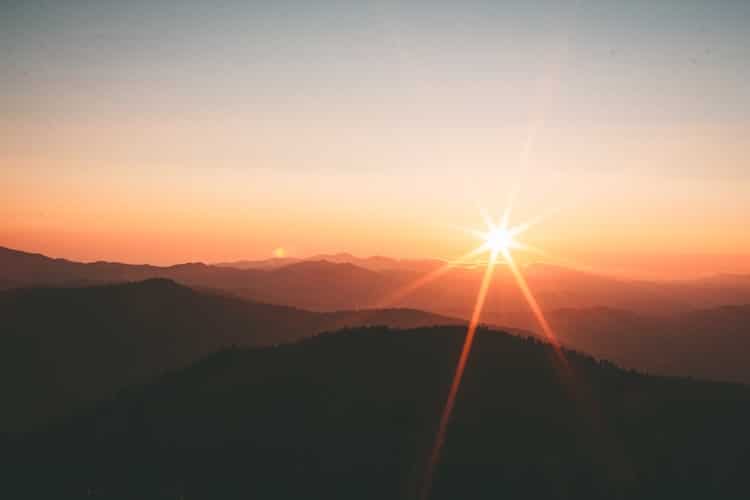
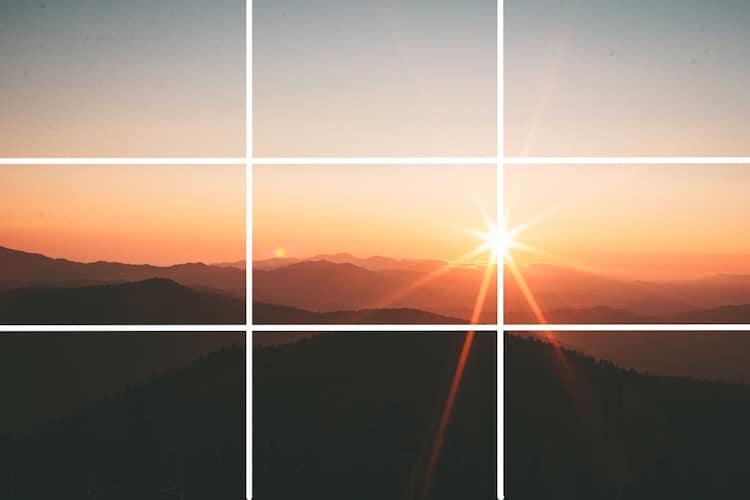
By placing the starburst slightly off-center, the photographer creates visual interest without overpowering the viewer.
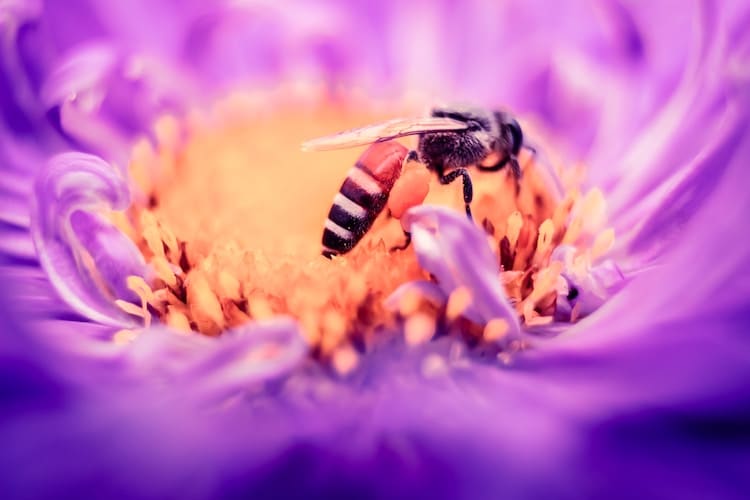
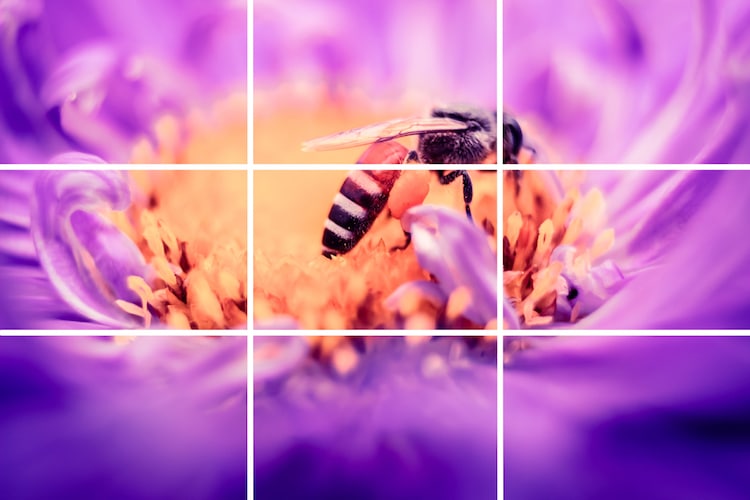
This use of the Rule of Thirds in macro photography creates an interesting composition where the flower fills the majority of the frame, but the bee is firmly placed as the main subject.
How the Rule of Thirds Is Used in Portrait Photography
Creating a balanced composition in a portrait—whether or a human or animal—can be tricky, but the Rule of Thirds allows you to be more subtle than you think. Applying the rule doesn't always mean positioning the subject off-center. Creative use of lines, whether through the position of limbs or facial features or drawing on the surroundings, can make for an effective image within the Rule of Thirds grid.
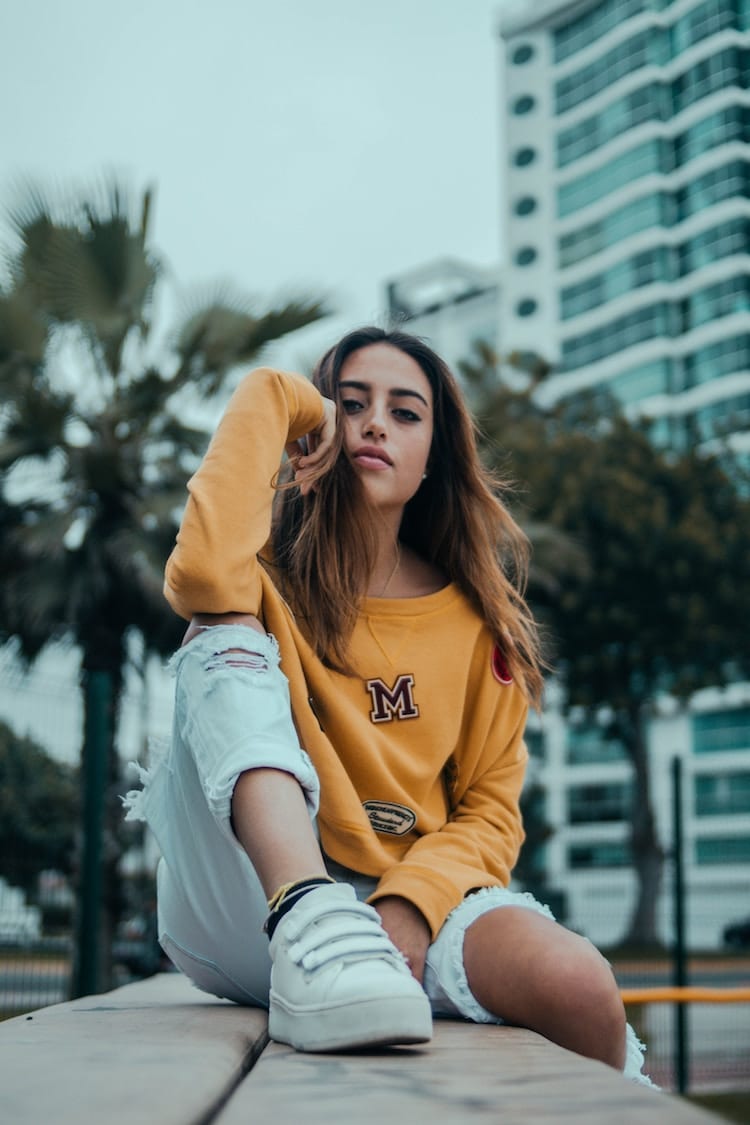
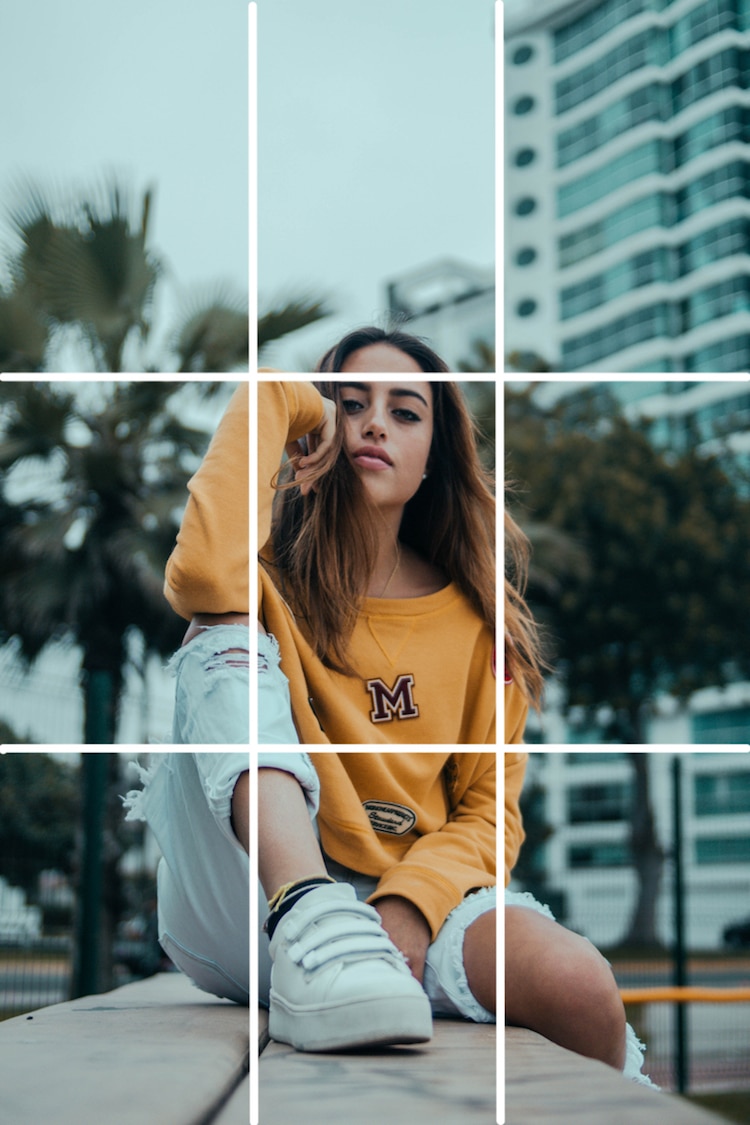
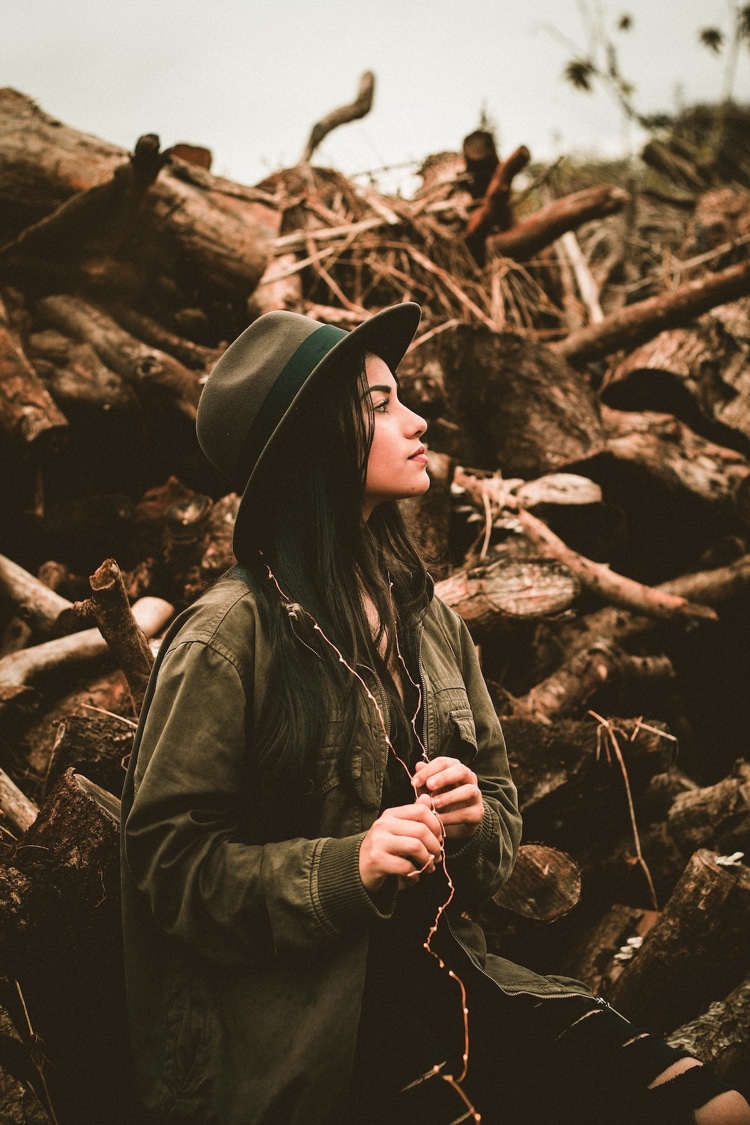
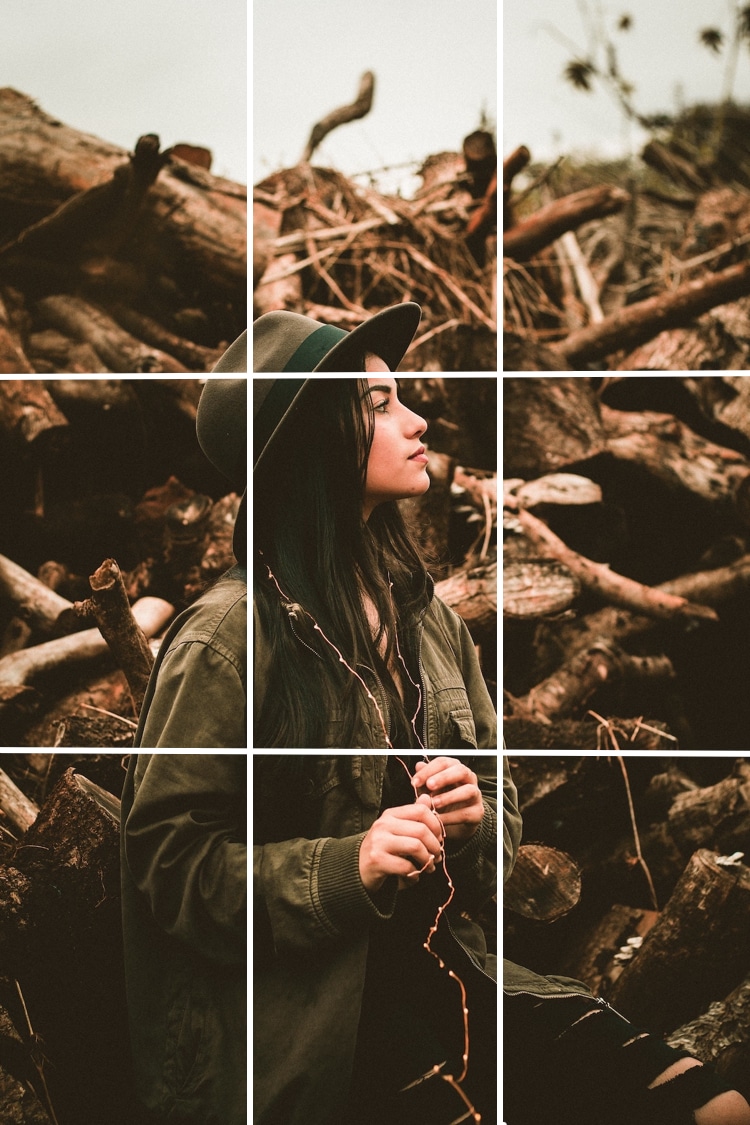
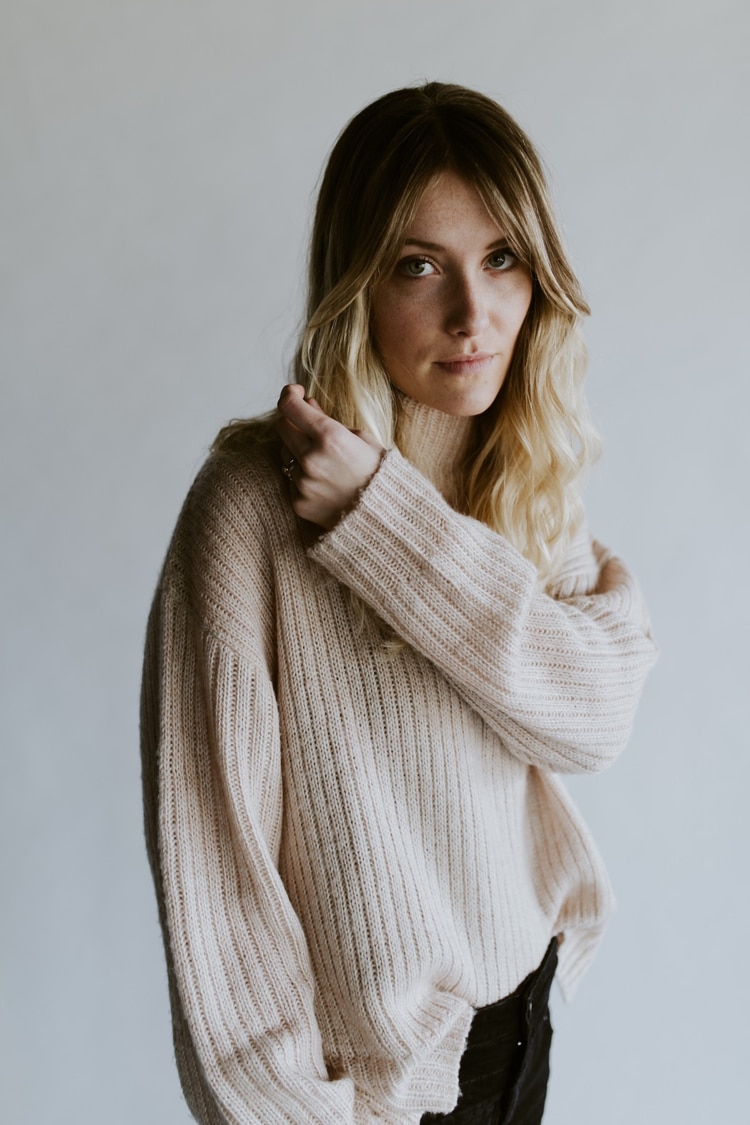
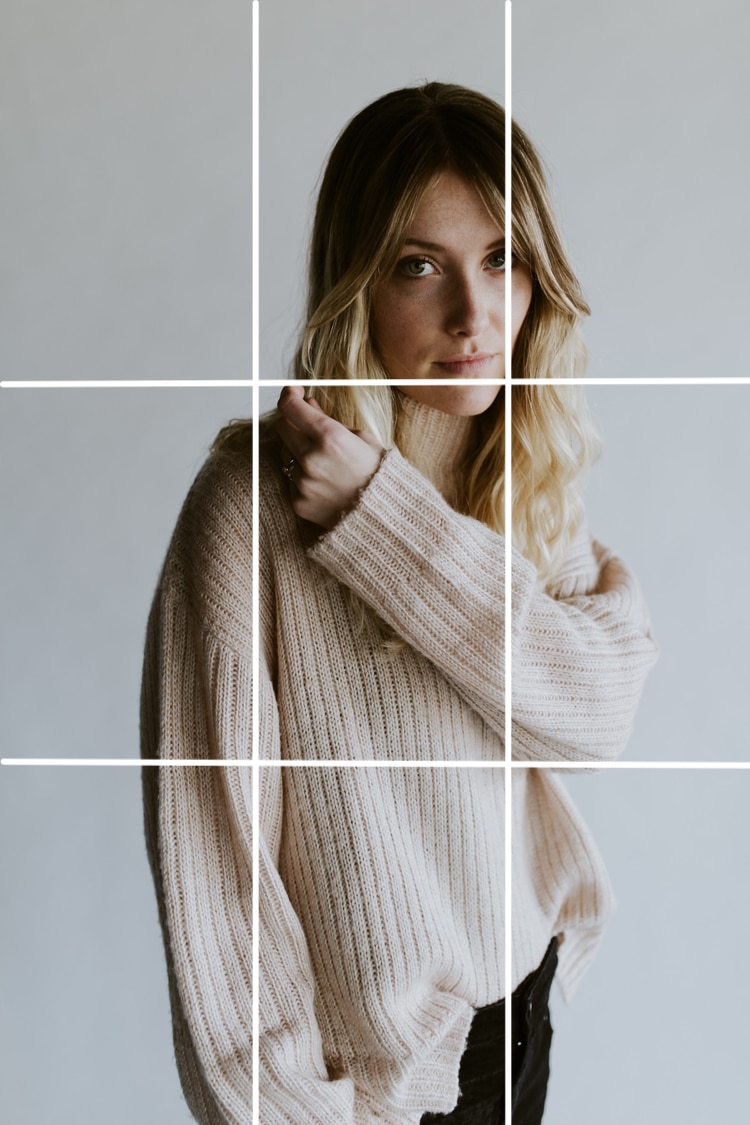
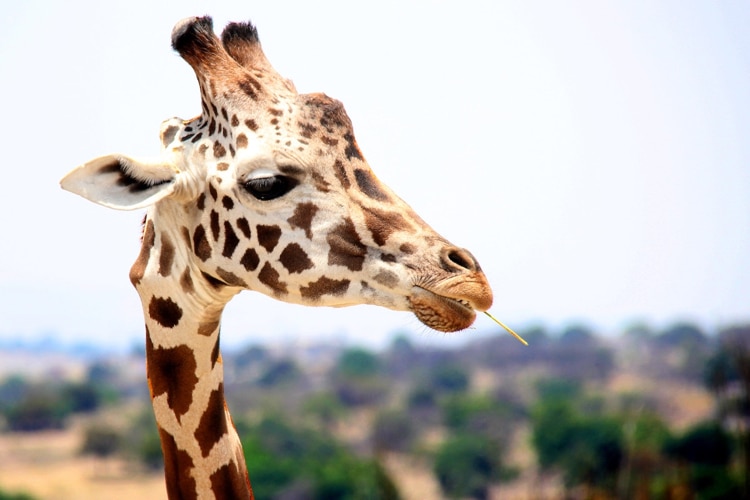
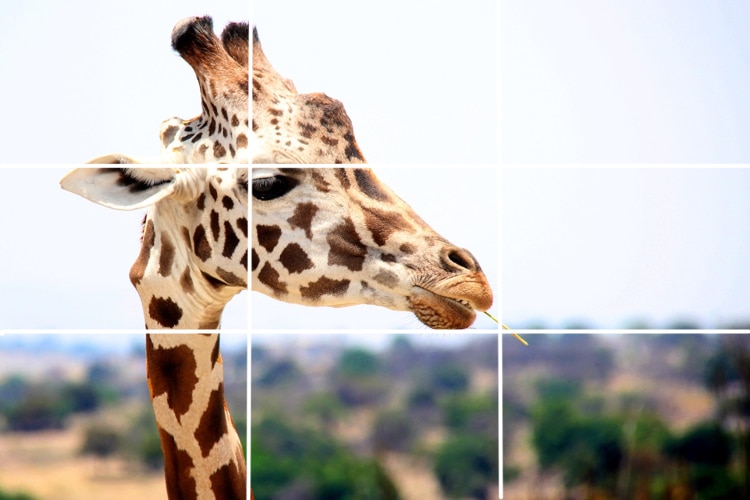
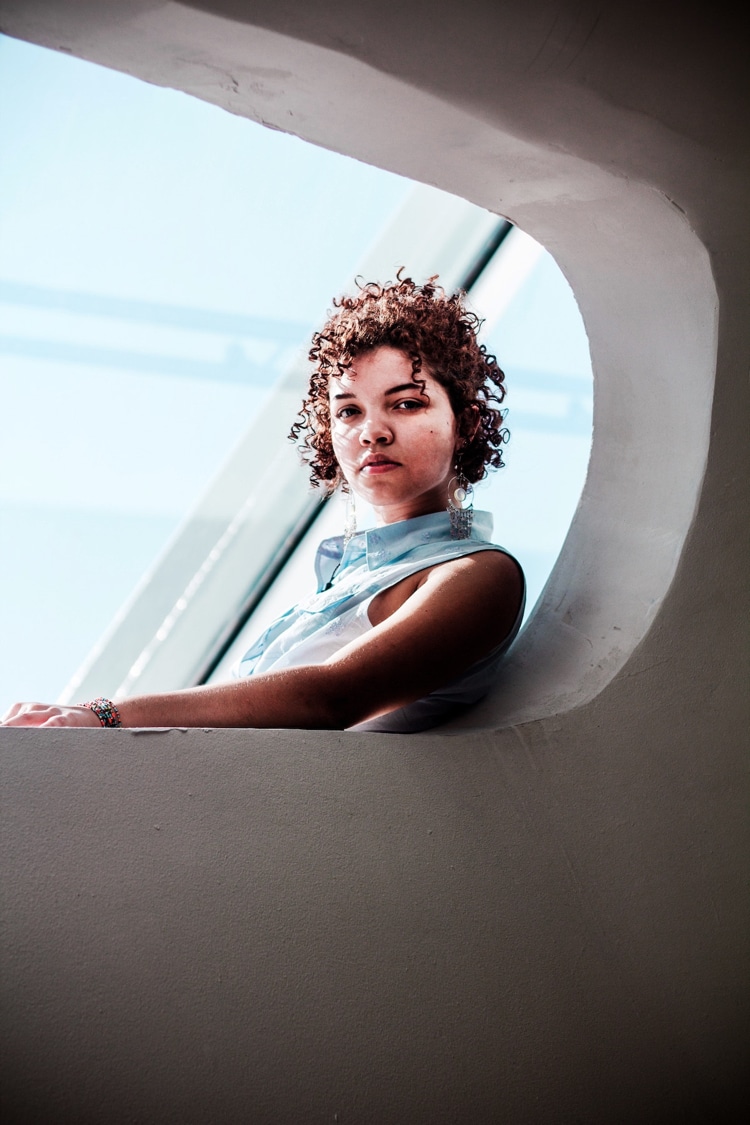
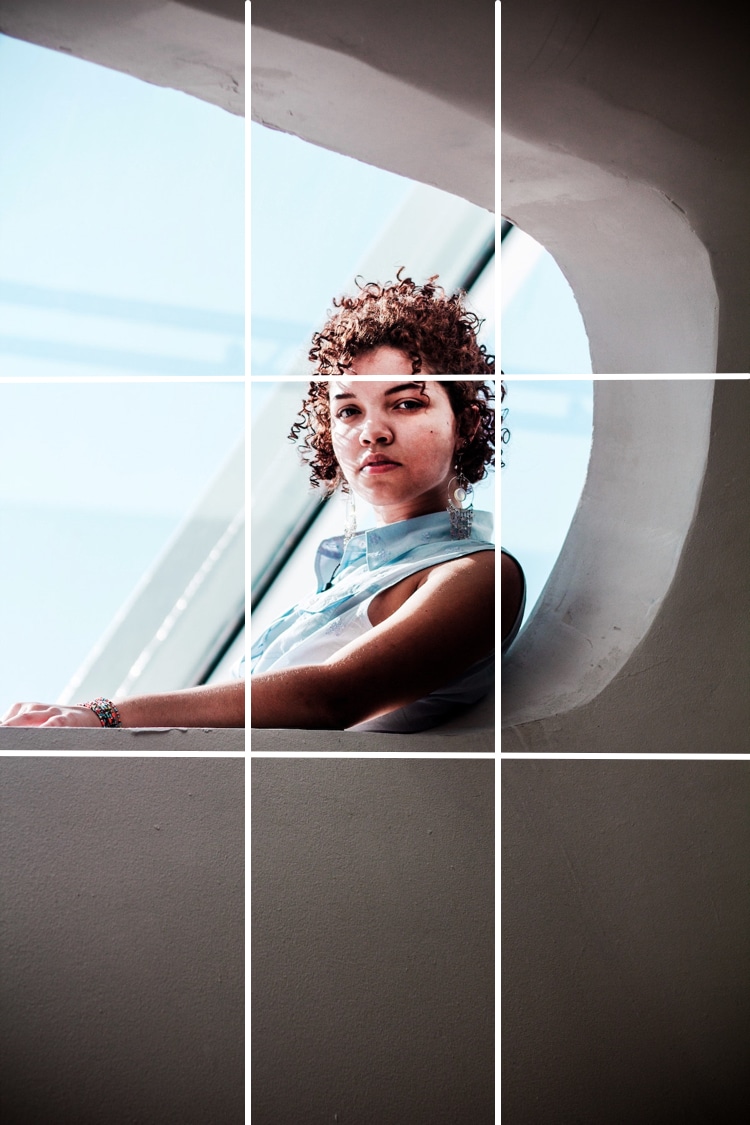
The article has been edited and updated.
Related Articles:
Improve Your Photography Skills with These 9 Photo Composition Tips by Steve McCurry
Photographer Uses the Golden Ratio to Compose Cinematic Images Full of Drama
Coloring Book Celebrates Mathematical Beauty of Nature with Hand-Drawn Golden Ratio Illustrations
12 Photography Projects to Stretch Your Skills, One Month at a Time
9 Artists Who Transform Flowers into Visually Satisfying Art Arrangements












































































